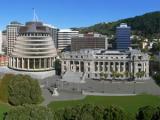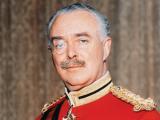The Legislative Council was New Zealand's Upper House, to which members were appointed, not elected. It ceased to exist on New Year's Day 1951.
Legislative Council
Events In History
Governor Sir George Grey issued a proclamation to bring the New Zealand Constitution Act (UK) 1852 into operation, establishing a system of representative government for the colony.
Articles
The House of Representatives

New Zealand's Parliament dates back to 1854, just 14 years after the signing of the Treaty of Waitangi and the beginning of the European settlement of the country. For most of its history as a nation state, New Zealand has had some form of elected government. Read the full article
Page 3 - Parliament
Today there are two parts to Parliament – the House of Representatives (or the Lower House) and the Governor-General, but between 1854 and 1951 there was a third part, the
History of the Governor-General

New Zealand has had a governor or (from 1917) a governor-general since 1840. The work of these men and women has reflected the constitutional and political history of New Zealand in many ways. Read the full article
Page 3 - Crown colony era
New Zealand became a British colony in 1840, legitimised by the Treaty of Waitangi and Lieutenant-Governor William Hobson's 21 May declaration of
Page 4 - Responsible government
From the 1840s settlers demanded a say in government. Governor George Grey suspended an overly elaborate constitution in 1846, but the New Zealand Constitution Act 1852 gave male













